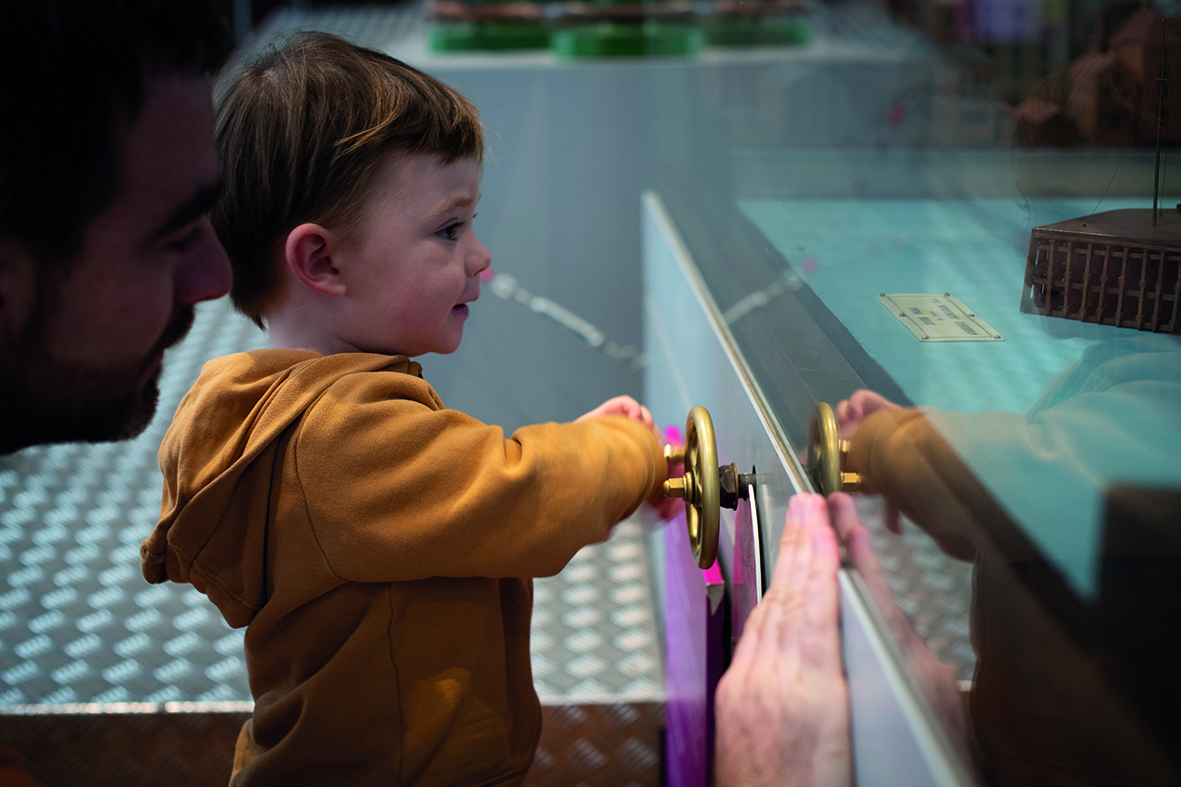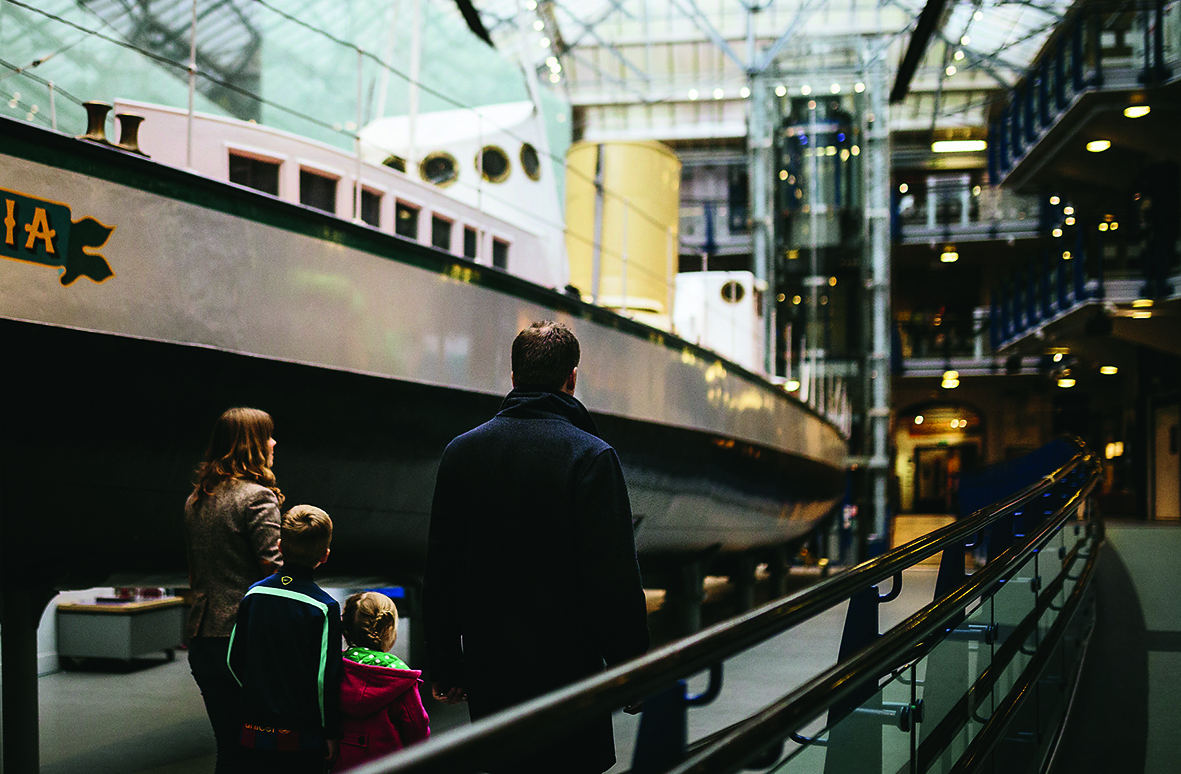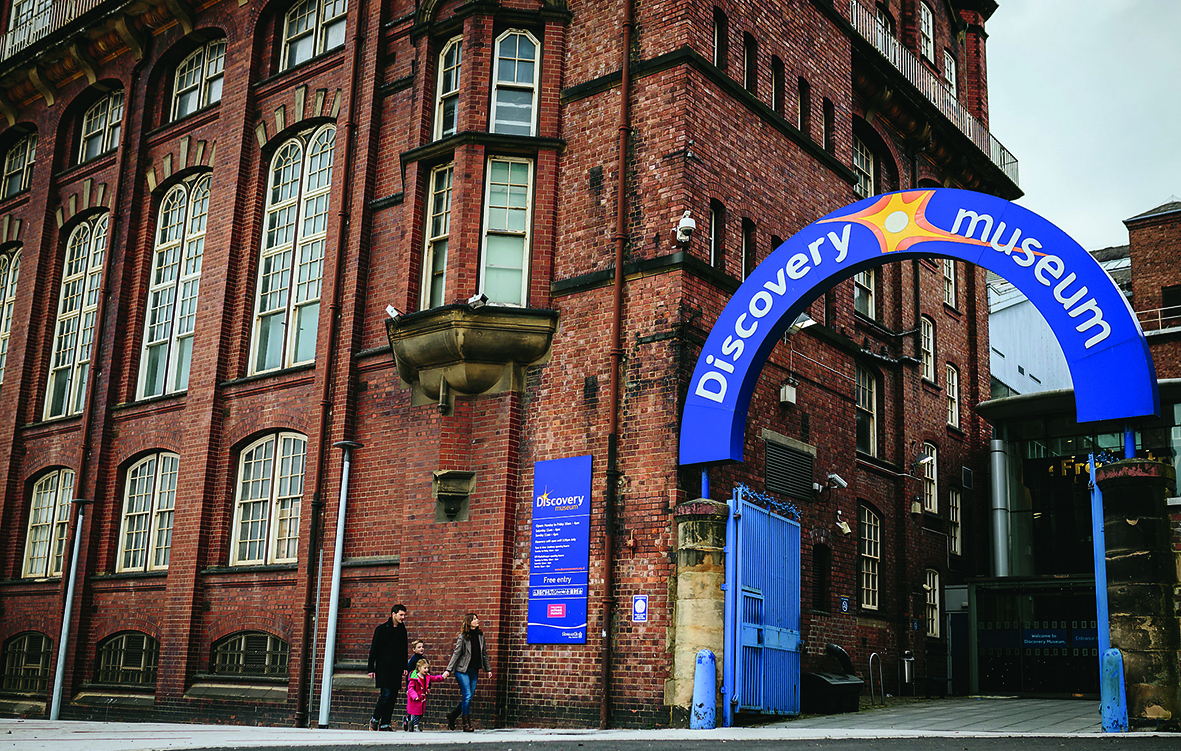
Today, we will be talking about magnetic ‘superpowers’, how objects are made from different materials and how this links to the museum's engineering collections. I use Makaton during sessions and activities are flexible, they can be moved to floor, table or lap-tray for accessibility. During group time there are floor, chair or sofa seating options. The sessions are informal and children can move around.
ACTIVITIES
 We begin with five to ten minutes of introductory activities set up at floor level. Today's activities include:
We begin with five to ten minutes of introductory activities set up at floor level. Today's activities include:
- Testing objects to see if magnets can pick them up.
- Fishing with magnetic fishing rods.
- Using magnetic wands to repel cars along tuff tray road markings.
- Playing with magnetic building toys.
After the welcome session, each child is given a giant magnet and together we investigate a selection of objects to see which ones attract the magnet. Items include a metal padlock, an old key, plastic building block, wooden lollipop stick, cymbals, plastic ball and a toy car. We discover that magnets only pick up metal. One of my favourite moments is when four children work together to pick up a large, old chunky padlock with their four giant magnets. I praise the teamwork and ask them why they needed all four magnets. A child tells me that the lock was too heavy for their magnet alone and they needed more magnet power.
Next, I ask who has caught a fish in my magnetic fishing pond. Some children have tried this activity in the settling-in time, others have not yet had a turn. We highlight this as something everyone can have a go at in the session. Together we sing ‘Once I Caught a Fish Alive’. Afterwards, I tell the children that it is time to explore and play again. As well as the four floor-based activities, I also set up two extra things for them to try on the tables:
- Painting with magnets – picking up bolts, nuts and paperclips with magnet wands, dunking them in paint then mark-making and paint-splatting.
- Making a magnetic racing track to take home.
 The children colour in a cartoon town map and car. I attach a sticky magnet to the back of the car and give the children a lollipop stick, which has a magnet securely taped and covered by black tape so it cannot easily become dislodged. The children then drive the magnetic car around their town with their magnet. Some children ask for extra cars so they can race them.
The children colour in a cartoon town map and car. I attach a sticky magnet to the back of the car and give the children a lollipop stick, which has a magnet securely taped and covered by black tape so it cannot easily become dislodged. The children then drive the magnetic car around their town with their magnet. Some children ask for extra cars so they can race them.
After 25 minutes it is time for our story – Magnetic Max. Some children are so engaged with the crafts that they choose to continue crafting rather than listen to storytime – child-led learning is encouraged. Those who want to return to the seating area and together we each find a giant magnet to hold during the story, like the boy on the cover. In the story, Max tests his magnet's powers on different materials. There are lots of ‘we’ve done that!’ comments.
PLANNING
I like Tiny Sparks to be exploratory and to incorporate and allow for an opportunity for the EYFS schemas of play. I find schemas useful when planning learning experiences to engage curiosity.
With today's session, I considered safety precautions with pacemakers. All families were advised in advance that magnets would be the focus.
DISCOVERY MUSEUM, TYNESIDE
 Number of visitors: 124,740 from 2021-2022.
Number of visitors: 124,740 from 2021-2022.
Collection: A STEM and local history museum dedicated to sharing the story of Tyneside. Includes artefacts relating to the region's shipbuilding heritage, such as Turbinia, the world's first team turbine powered ship.
Early years offer: ‘Tiny Sparks’ – hour-long sessions delivered weekly during term-time for EYFS children and their parents and carers. All sessions are chemistry-focused this year following funding from the Royal Society of Chemistry.









